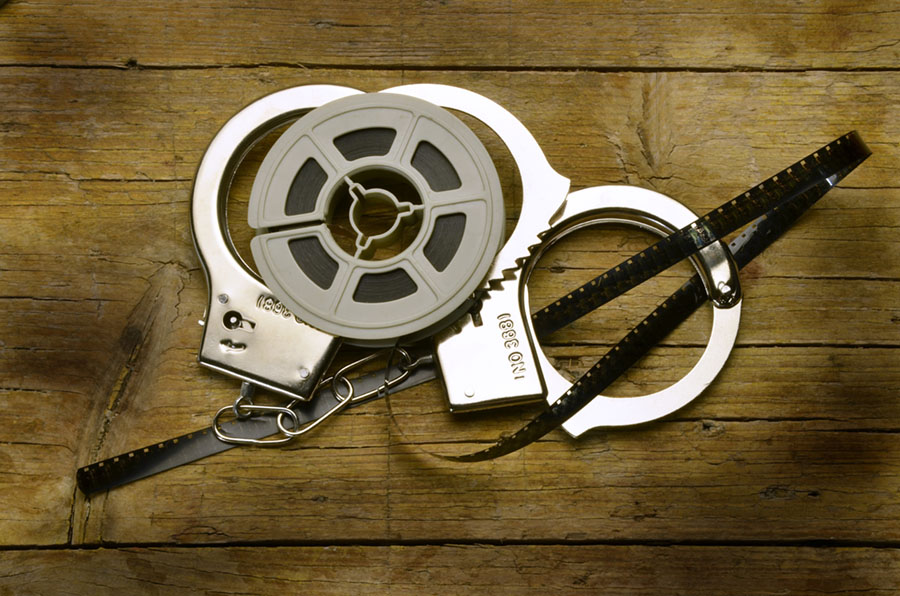
Censorship in Movies
Beyond Self-Regulation: Censorship in Movies is on the Books
You will find censorship in movies mentioned as you read almost any narrative of the film industry or the television industry.
But most observers and commentators try to separate true censorship from the process of regulation that studio owners and filmmakers employ voluntarily. In the United States, the history of censorship in movies as a formal effort probably dates from 1930.
The movie moguls and their organization passed and enforced the Hays Code as a way of preventing and controlling film content.
The list of regulations was named after Will Hays, who headed the Motion Picture Producers and Distributors of America.
At that time, the studios provided scripts on a volunteer basis as an alternative to government interference. By most accounts, this code was effective in preventing some content from ever being viewed.
The regulations also managed to limit the subjects that were filmed, based on guidelines set by a small number of men associated with the movie industry.
Other histories of the film world record that, as far back as 1909, New York had a formal organization that performed much the same task as the Hollywood group.
There was little doubt as to the purpose of this east-coast organization since its name was The New York Board of Motion Picture Censorship.
Film Industry and Regulation of Content
https://www.youtube.com/watch?v=UTL3XMDwY0c&feature=emb_logoCan the Filmmakers be Their Own Police?
At the top of the group’s agenda was determining if the film industry was fit to determine its own content. In a matter of six years, the organization became known as The National Board of Review.
There were still some attempts by elected government officials to put censorship in movies on the law books.
The US Supreme Court determined that states could censor films, a ruling that opened the door to censorship in one-third or more of the states.
Many of these local and regional rules included lists of specific topics that could not be seen on film. The same was true with the Hays-led MPPDA.
Censorship Touches Almost Every Film
At one point in the recent past, about one film in 10 managed to get past the various censorship boards without major changes.
For many years, the primary objections to film content, including dialogue, came from religious-based groups. These groups, both formal and informal, objected based on such terms as indecency or lack of morality.
Just about every US citizen is familiar with the current rating system from the Motion Picture Association of America. That’s the one that includes such icons as NC-17, R and PG-13.
The long-standing production code for censorship in movies was replaced in 1968 with the above-mentioned system. The ratings are intended to caution parents about content.
The organization emphasizes that the MPAA seal and rating is not an endorsement.
Censorship Changes Over Time
The reasons for censorship in movies, or attempts at censorship, change with the times, of course. Through the decades, subjects that were once completely forbidden become accepted, though grudgingly by some.
In the early 1930s the innuendo of Marx Brothers movies was altered to make it less offensive, according to standards of the day.
In the 21st century, the language of those films seems silly and harmless. In 1952, the word pregnant was not deemed suitable for television audiences, even on I Love Lucy.
As recently as 1960, some municipalities had their own film-screening boards. Their authority was upheld in the courts and theatre operators could either live according to those rules or not show a particular film.
But today, the innocent nudity of Cybil Shepherd in The Last Picture Show would be quite tame. Of course, it would be labelled by the MPAA system so that we know what it is we’re going to see!

 My First Amazing Ayahuasca Experience
My First Amazing Ayahuasca Experience  Pine Needle Tea
Pine Needle Tea  The REAL Controllers of Humanity: The Papal Bloodlines
The REAL Controllers of Humanity: The Papal Bloodlines  Is it Global Warming or Cooling?
Is it Global Warming or Cooling?  Gun Rights and Obama Examined
Gun Rights and Obama Examined